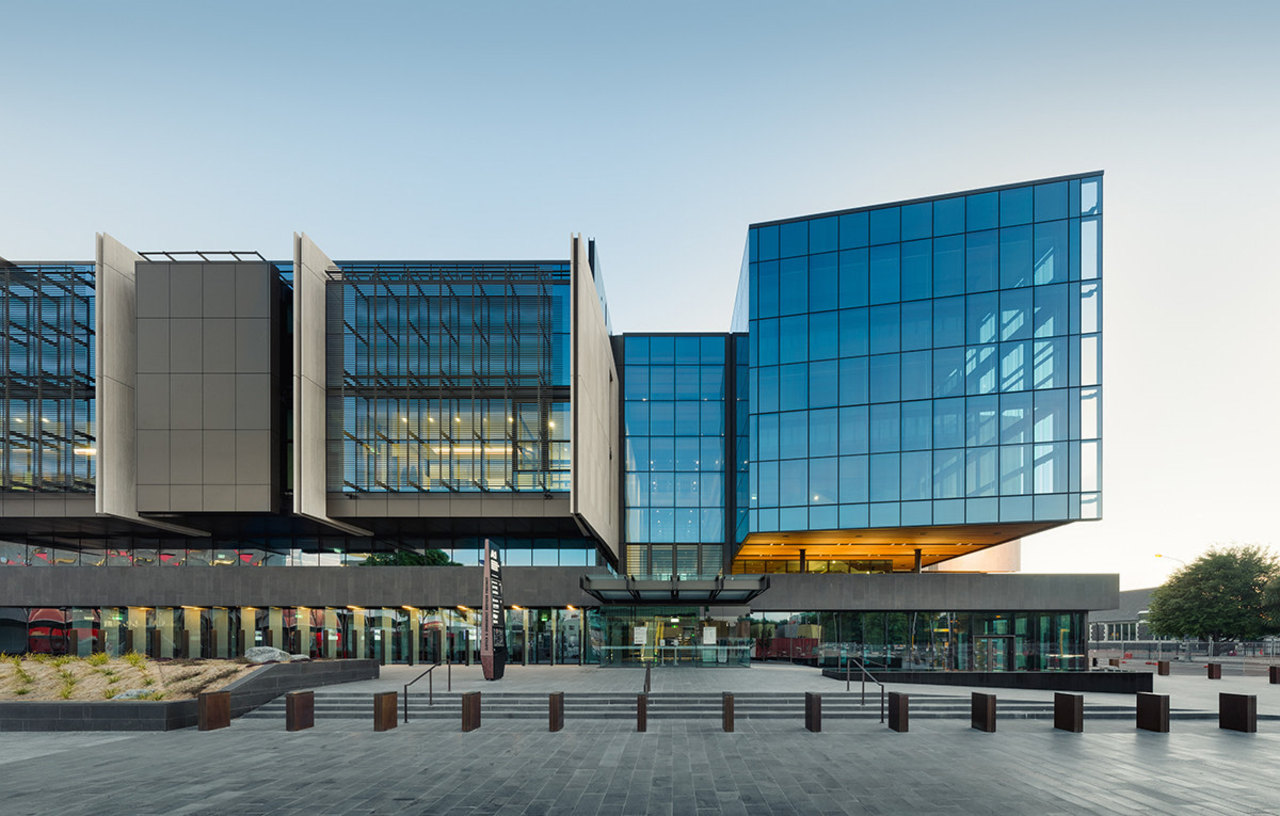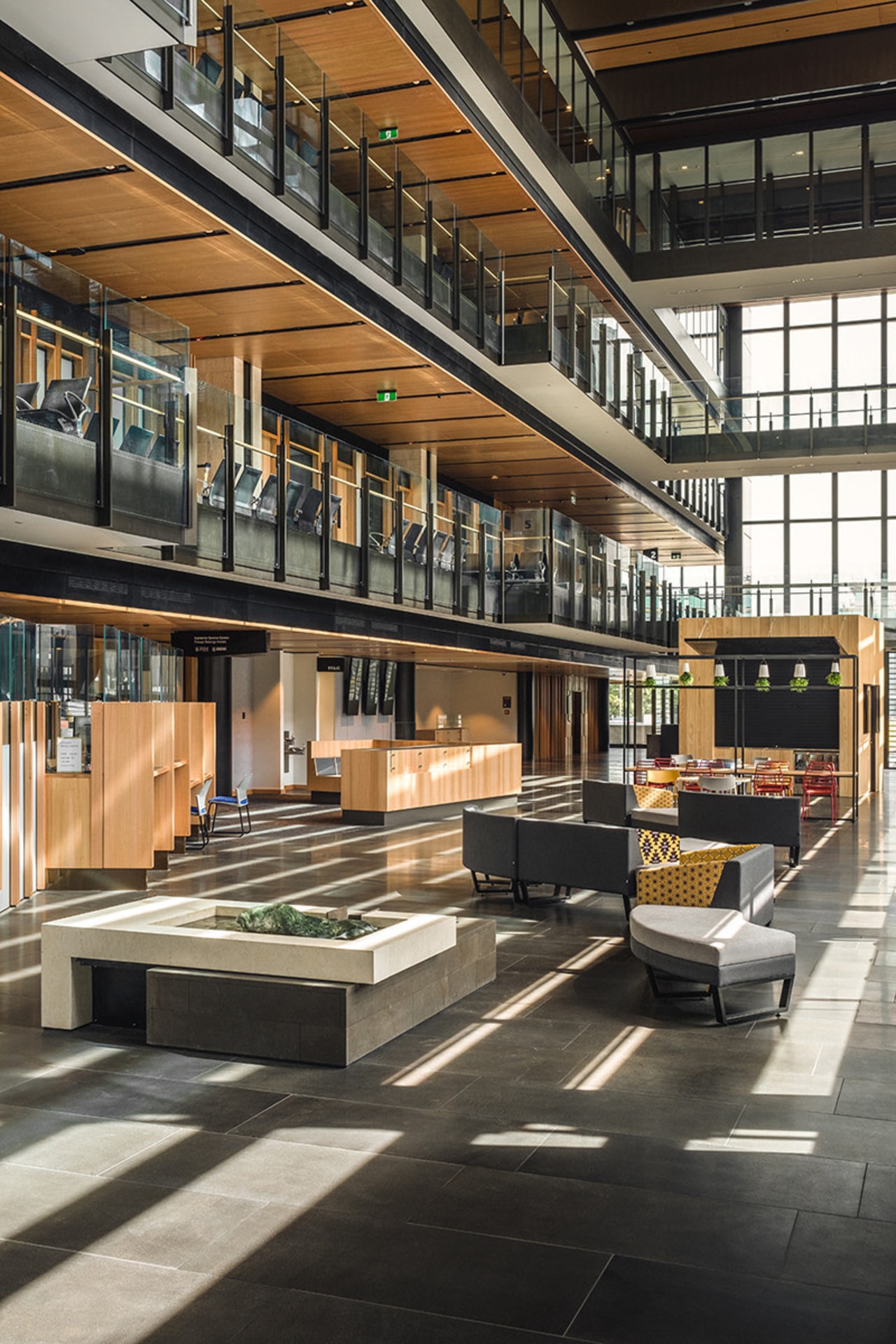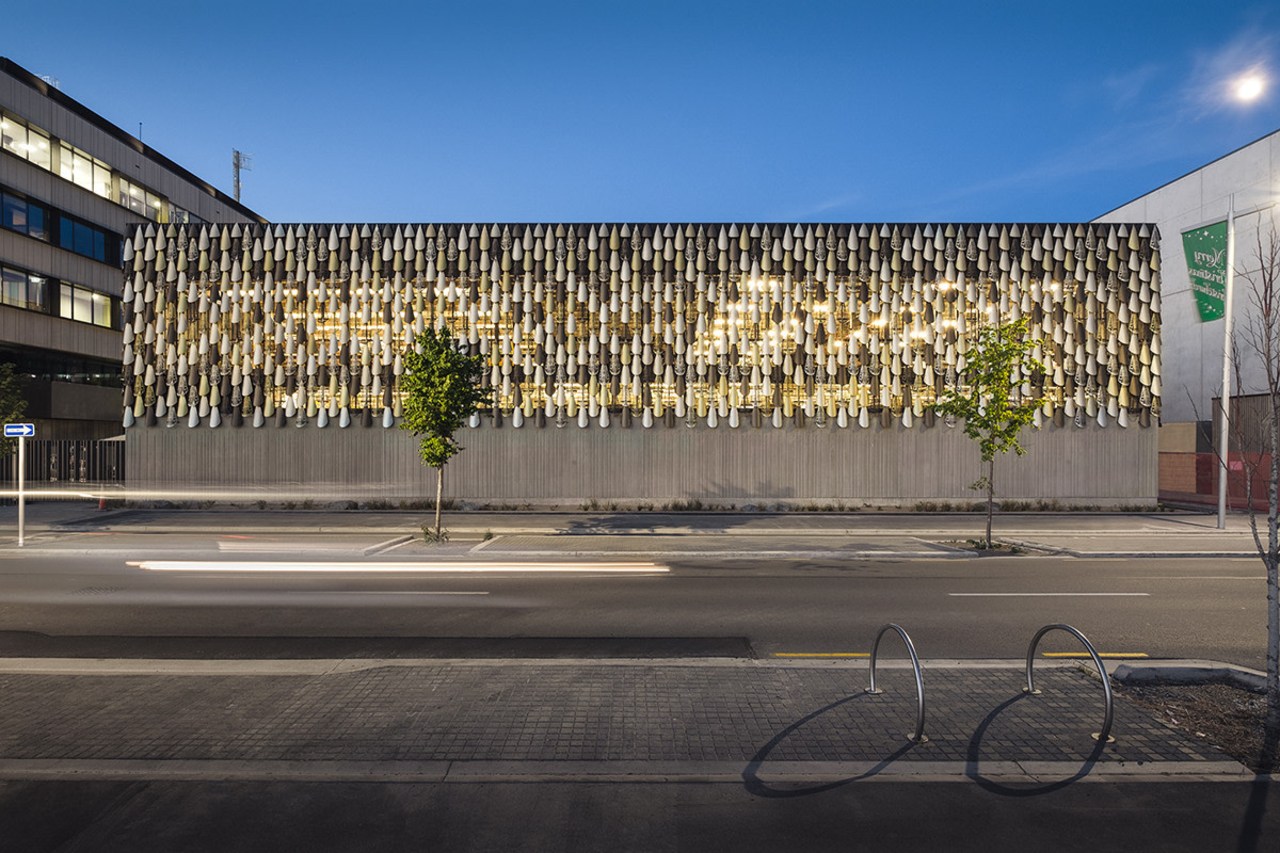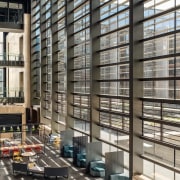Justice Precinct designed as anchor project in Christchurch rebuild masterplan
The Christchurch Justice and Emergency Services Precinct presents a more approachable face to the court system and facilitates cross-discipline efficiency and expediency

In 2011, a series of earthquakes decimated Christchurch’s inner city, destroying the majority of civil and social infrastructures. With the heart of the city being rebuilt from the ground up, the tragedy brought the opportunity to completely rethink the way government agencies operate and look.
The new Justice & Emergency Services Precinct brings together several government agencies in the first significant government construction to go up after the quakes.
The Precinct draws together the Ministry of Justice and Christchurch-based judiciary, New Zealand Police, Department of Corrections, St John New Zealand, Fire and Emergency New Zealand, the Ministry of Civil Defence and Emergency Management, the Civil Defence and Emergency Management functions of Christchurch City Council and Environment Canterbury.
Comprising 40,000m² of floor space over five floors, the Precinct is made up of three buildings. The Law Courts Building forms a U-shape, with a linear building housing emergency services agencies almost closing the U to create a central public courtyard.
The operational carpark building is another linear structure and this runs parallel on the outer side of the emergency services building. Transverse bridges link the buildings on the upper levels, while the glass atrium in the Courts Building links the main roads on both sides of the Precinct.
Warren and Mahoney was commissioned as part of the team that created a new Blueprint for Recovery masterplan for the reconstruction of the city centre, including this anchor project. Principal architect Nick Warring says that Ministry of Justice chief executive Andrew Bridgman’s brief was for a more open, less formidable relationship between the public and physical justice environments.

“Traditionally, public court buildings have been rectangular, dark and daunting environments. In contrast to the dense massing of those buildings, we created the U-shape Courts Building with the foyer, waiting and circulation spaces – including the atrium – ranged around the light-filled courtyard.
“This layout means all public spaces and internal public circulation paths have natural light and views, while allowing the 19 courtrooms in the building to also enjoy natural light and views out to the city.
”Functional organisation and material finishes inside the Courts Building further its approachability while retaining a necessary sense of civic gravitas.

“The central atrium is the principal space in the Courts Building – rising the full height of the interior,” says Warring. “This has a full-height, glazed wall looking directly into the landscaped courtyard.”
With clear lines of sight to stairs, lifts and the pedestrian bridges, the atrium provides an easy wayfinding element within the complex – one move of many to help decrease stress for visitors and occupants in the courts environment.
The public cafe and court registry are on the first floor and the courts and workspaces are on the two levels above, with open glass balustrading overlooking the atrium. In a sense, the Courts Building is really three buildings, joined at the corners by large, airy glass vertical circulation spaces.
Myriad stairs and elevators are positioned to avoid judges, lawyers, defendants, jurors or police being in the same lift or stairwell and potentially compromising a trial.
The design of the courtroom interiors also furthers the change of design language from intimidating spaces of the past to more calming spaces. So while the High Court had to retain much of the formality of older-style courts, dealing as it does with the most serious cases, the Youth Court and Family Court, as examples, have more informal designs, with curved, furniture-like layouts and ceiling features.
As with much of the atrium, the courts are largely finished in wood, chosen for its natural warmth and character.
The Precinct has been designed to be embedded with Ngai Tuahuriri and Ngai Tahu customs and values. Jessica Smallbone of the Ministry’s project team led extensive engagement over four years with mana whenua to develop more than a dozen integrated designs across the Precinct, including a huia feather pattern for the court windows.
As well as adding another positive feature to the court environment, the windows’ special double-layered fritted glass also decreases solar gain on these rooms by 40%.
While the co-location of government entities made the Courts Building’s circulation somewhat tricky, in all other ways it presented an economy of money, time, and effort.
For example, defendants in police holding cells can be brought straight to court via secure corridors and stairs – without the need to be driven across the city with the attendant security, vehicle and personnel costs involved.

This economy of government function is even more evident in the emergency services building where the various emergency services each have their own distinct but connected workspace. In case of an emergency response, they all coordinate or individually take precedence of control in a large central joint operations room – depending on the nature of the emergency. Soundproofed windows on each floor look into the central space.
Often an emergency will involve more than one service, and the speedy coordination of these disciplines may well help save lives through a connected and optimised response.If there is ever seismic activity in the future, it’s reassuring for all response staff – in fact everyone throughout the complex – that the Precinct employs highly advanced seismic protection systems.
“The Courts Building and emergency services building have base isolation engineering and are built to an Importance Level 4 (IL4) standard – this ensures the buildings remain operational following a one-in-one thousand year seismic event,” the architect says.
Essentially, the two buildings are set on giant lead-rubber isolator bearings. When the ground moves, the bearings compensate for the activity and the buildings remain static.
The Precinct carpark building is also IL4 but has a different seismic safeguard, in the form of a rigid cross-braced steel frame structure.“Across the Precinct, the material palette was carefully considered to convey permanence and ‘civic weight’ in a contemporary way that is attuned to the site and the city,” says Warring.
The materials of choice – bronze, aluminium, stone, glass and timber – have all been used in a way that reflects the basic layering of the buildings.

“Bluestone forms the external ground plane from the street edge, folding up around the building and rising to cap the ground floor and pave the atrium and external courtyard – signifying the public spaces within the precinct.
”The first floor, the primary public interface, is finished in full-height glazing. This forms a visual break between the bluestone plinth and the light-coloured, limestone-clad blades that bookend each of the courtrooms on the upper levels of the Courts Building. In between each pair of courtrooms, internal spaces dedicated to services and circulation, are clad in aluminium panelling.
The facade treatments mean you can ‘read’ where the courts are from the street, while the stepped surfaces and blades play down the building’s bulk, giving it a more human scale.
Warm-look timber-battened soffits and ceiling panels provide a softer contrast to the stone and glass, and connect to the extensive use of timber in the courtrooms. The timber surfaces also delineate public waiting areas and circulation spaces.
“The emergency services building shares a common design philosophy with the Courts Building, but has subtly different materials and an architectural language tuned to reflect the distinction between the civic and service wings of the complex,” says Warring.
“The cladding differences between buildings gives external expression to the necessary constitutional separation between Police and an independent judiciary.
”Ministry chief executive Andrew Bridgman says he is impressed that the many specialist and sensitive operational areas have been delivered. “It’s an impressive building for the people working in it and for visitors,” Bridgman says.
Credit list
Project
Construction
Mechanical and electrical engineer, fire consultant
Project manager
Landscaping
Cladding
Hardware
Blinds
Wallcoverings
Veneers
Lighting
Furniture
Signage
Architecture and integrated interior design
Structural engineer
Quantity surveyor
Civil engineer
Roof
Wall
Balustrades
General flooring
Ceiling panels
Paint
Heating/air conditioning
Security system
LIft services
Story by: Charles Moxham
Photography by: Lightforge
Home kitchen bathroom commercial design
Classic looks, contemporary efficiency
Diving into nature
Personality plus
Commercial Design Trends Vol. 34/1C
Flexibility has become the keyword in the workplace – both as a business process and in the physical design of our work ...
Read More












